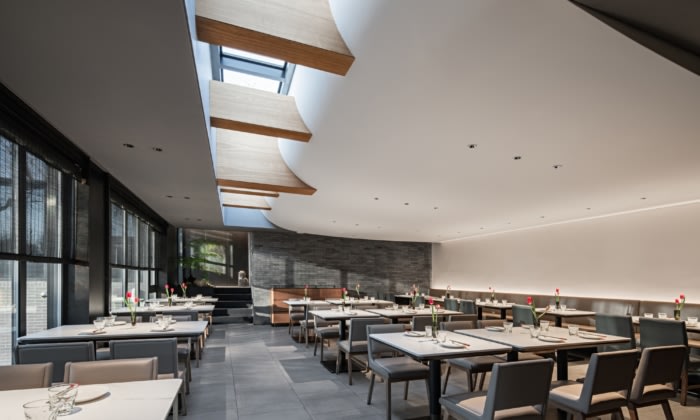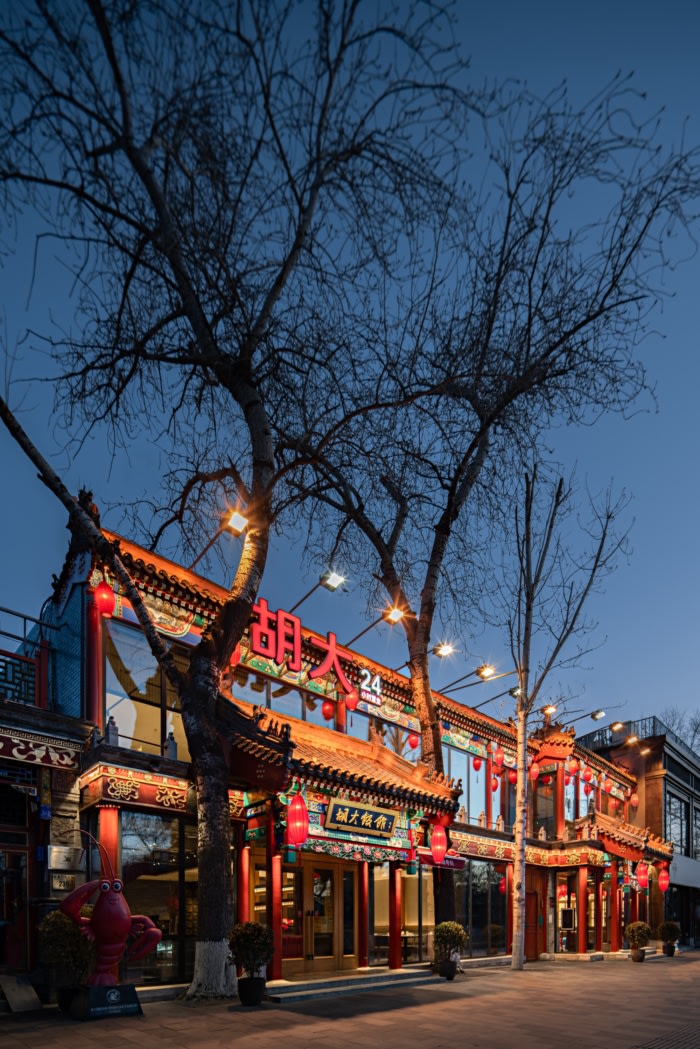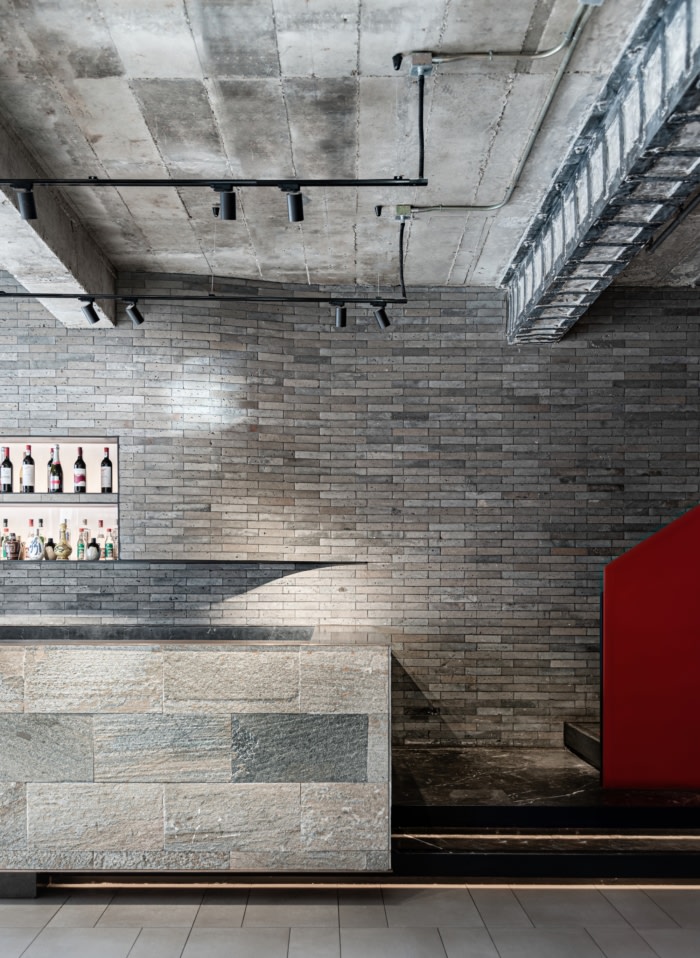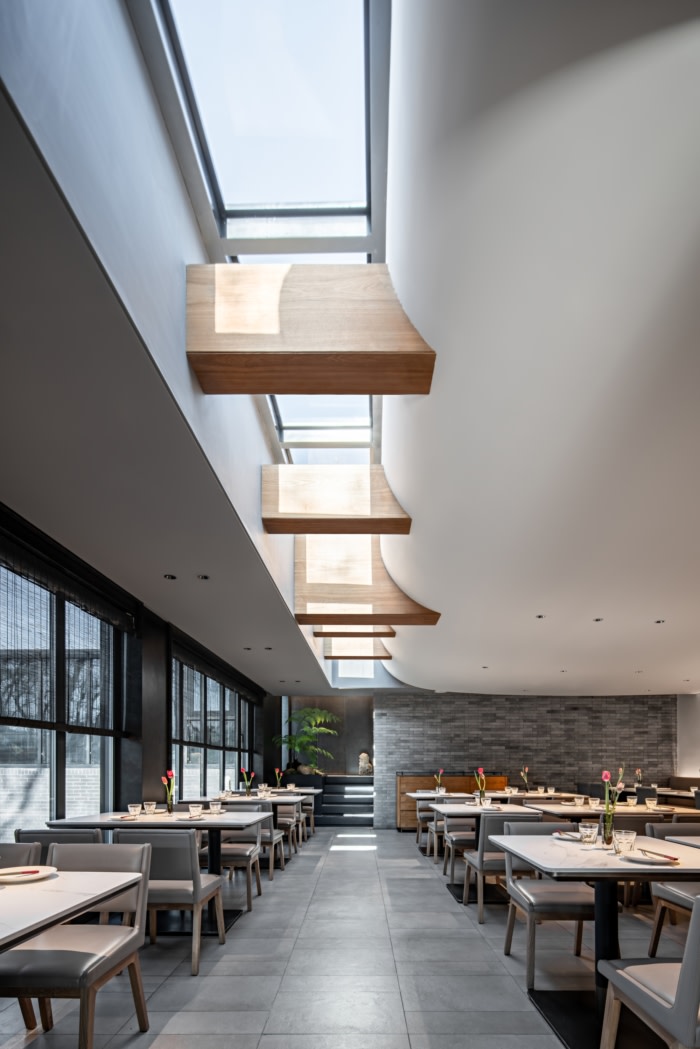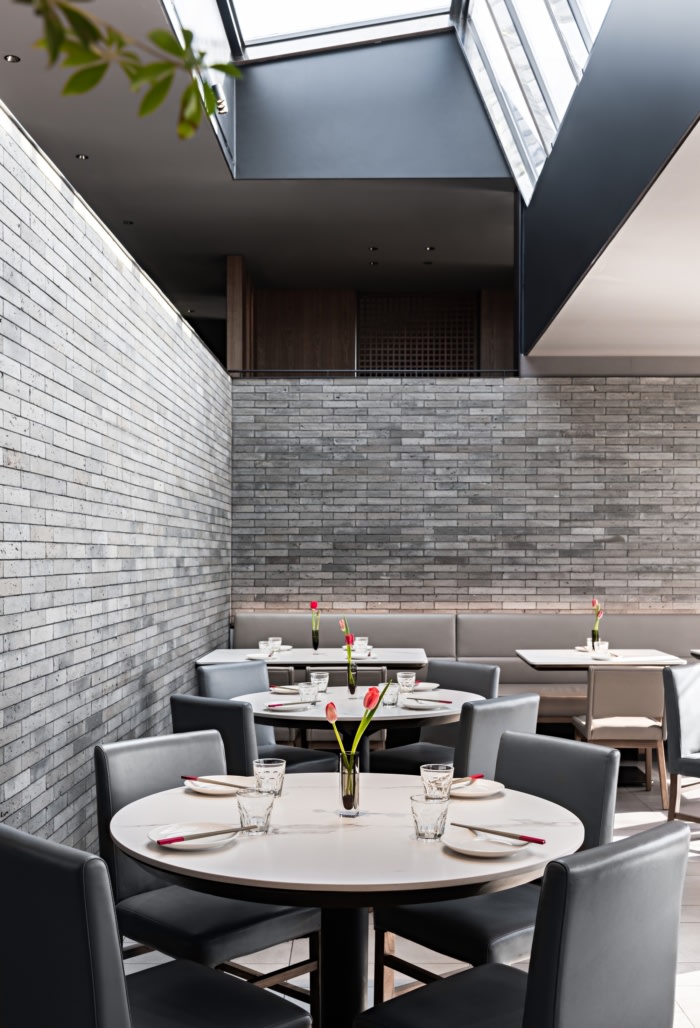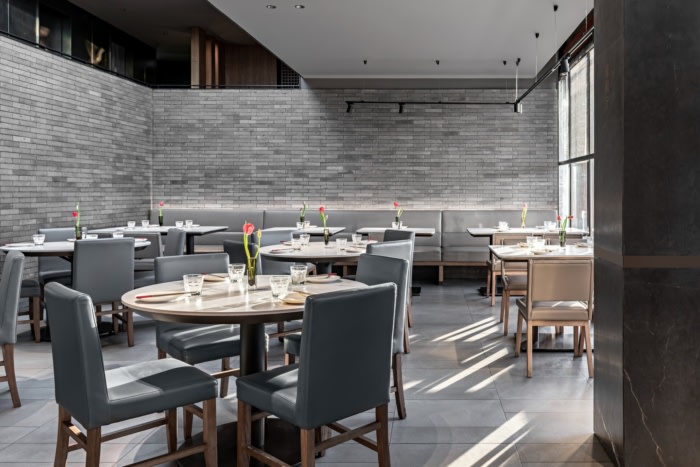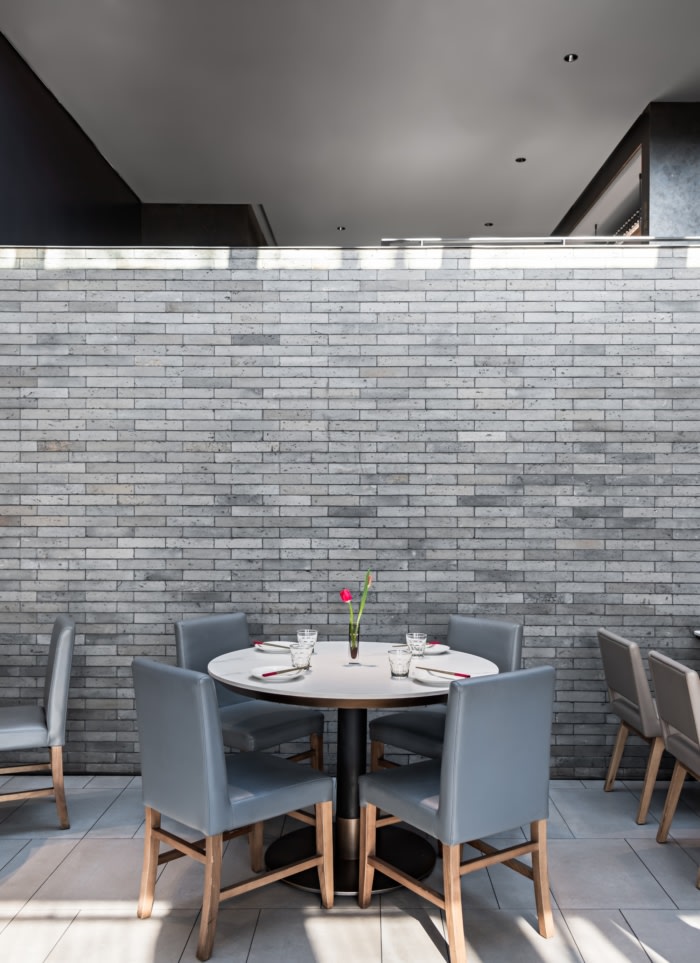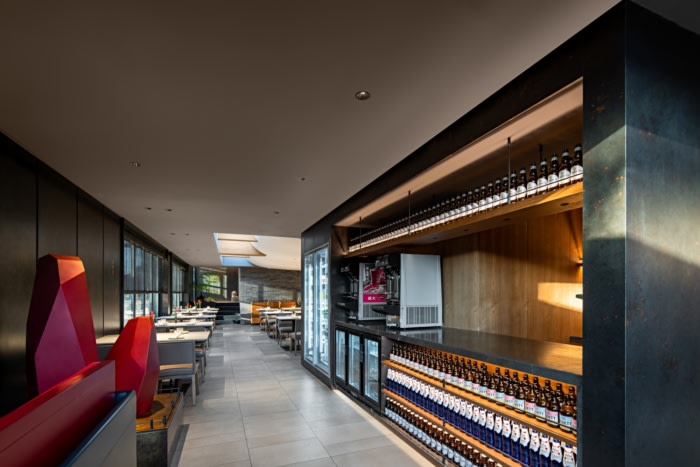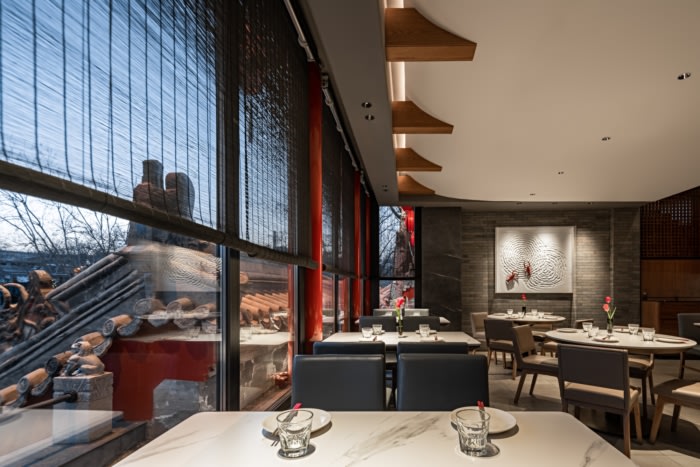Huda Restaurant
IN.X Design intertwined industrial, traditional, and modern styles for guests dining at the Huda Restaurant.
In 2020, under the cooperation between Guo Dong – the second-generation manager of Huda Restaurant and the design team of IN.X, Huda Restaurant in Guijie completed its first refurbishment in the past 20 years. When the restaurant is reopened, the queuing crowd is a relief to the designer Wu Wei, who said that this was actually what he had expected, because he was familiar with the game rule of Huda Restaurant.
Huda and Guijie
In 2016, it was the first time Guo Dong commissioned IN.X to design a branch of Huda Restaurant. Since then, he has never been disappointed. Although Wu Wei rarely shows in the public activities, he has been regarded as a skilled designer who understand business the most in catering space design field. From exterior to interior, a large area of striped black bricks are used to extend the street style to the indoors, as if the restaurant grew from the street, rather then an unexpected existence. Located inside the second ring road in Beijing, the prosperous dining environment of Huda Restaurant is booming in the unique gray alley of the old urban district. Inside the restaurant, the artistry is conveyed from the furnishings to the overall space. As the typical color of Beijing, red and gray form the palette of space, where traditional building structure elements are deconstructed and recombined in patios and eaves. With transparent and smooth line, the interior light and shadow change quietly along with the weather and pedestrians outside the window. Even the space function arrangement, lighting change with time and the disappearance of gender divisions in the bathroom are more subtle artistic expressions in the design. The location and landscape history gave Huda Restaurant a profound cultural gene, which is what it can borrow. As a result, the design of the space tends to be lighter, where the harmonious combination of tension and relaxation reach a good effect.
“What’s your design idea?”
The renovated Huda Restaurant is inspiring and enjoyable. The design separates the restaurant function areas clearly, which was a disorder originally like a maze. After completion, each area is connected to each other to guarantee enough sunlight and outdoor landscape no matter where you sit. Rhythmic railings in the shape of hitching post replace the old railings in the ancient architectural style. When the sight is connected to the outdoor landscape through floor-to-ceiling windows, these railings have become the best visual focus.
The large area of black bricks presents a low-key and rich layering under the superposition of light and shadow and cutting details. Forbidden City Red, which can also represent the taste of Huda Restaurant, catches the diners immediately through the eye-catching stairs. It is designed based on the clear movement in the space, and the visual effect is the added value. The bar counter was added as a new functional area, supplementing the waiting area and adding a young vigor to the restaurant. Another breakthrough was made in the washroom: the lighting colors change according to the three periods of daytime, meal time, and midnight snack time, echoing with mood and time. Although traditional materials are used on a large scale, they are full of concise and upscale contemporary feeling because of the modern processing and design techniques. This kind of contemporary feeling grows from the simplest place, with a strong passion for life and a style that belongs to Huda Restaurant and the Guijie Street.
In the past 20 years, Hu Da, as a catering brand that co-exists with Guijie Street, has become a business card representing Guijie and even Beijing. Facing the future ever-changing customer group and the new needs of regional and urban culinary culture, Hu Da has to complete the upgrade to ensure a more lasting vitality.
Design: IN.X Design
Design Team: Wu Wei, Liu Chenyang, Jia Qifeng, Li Yan, Jin Shengxu, Song Jiangli, Ying Zheguang
Lighting Design: Zhu Haiyan
Photography: Zheng Yan

